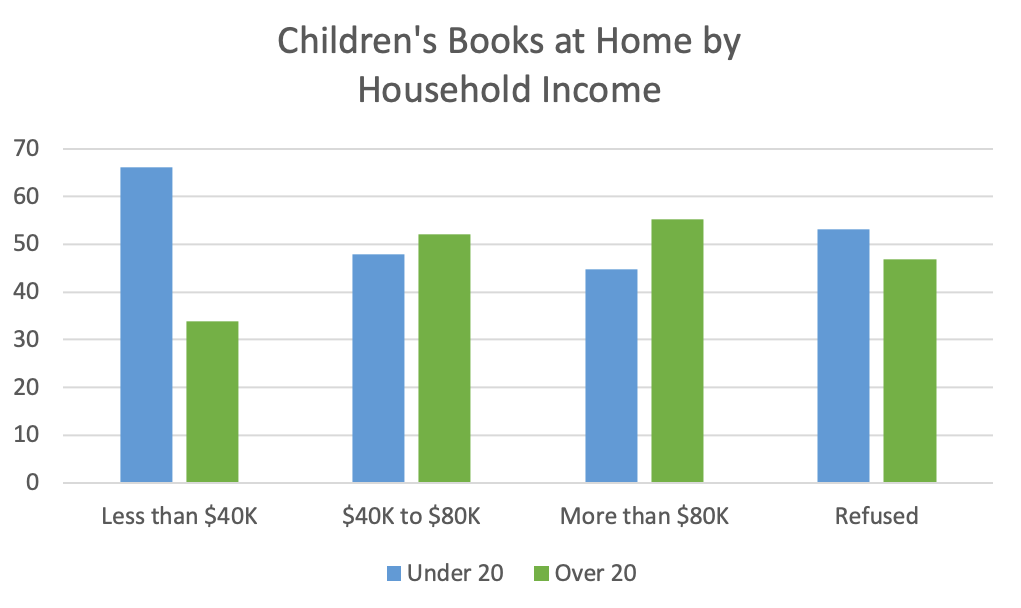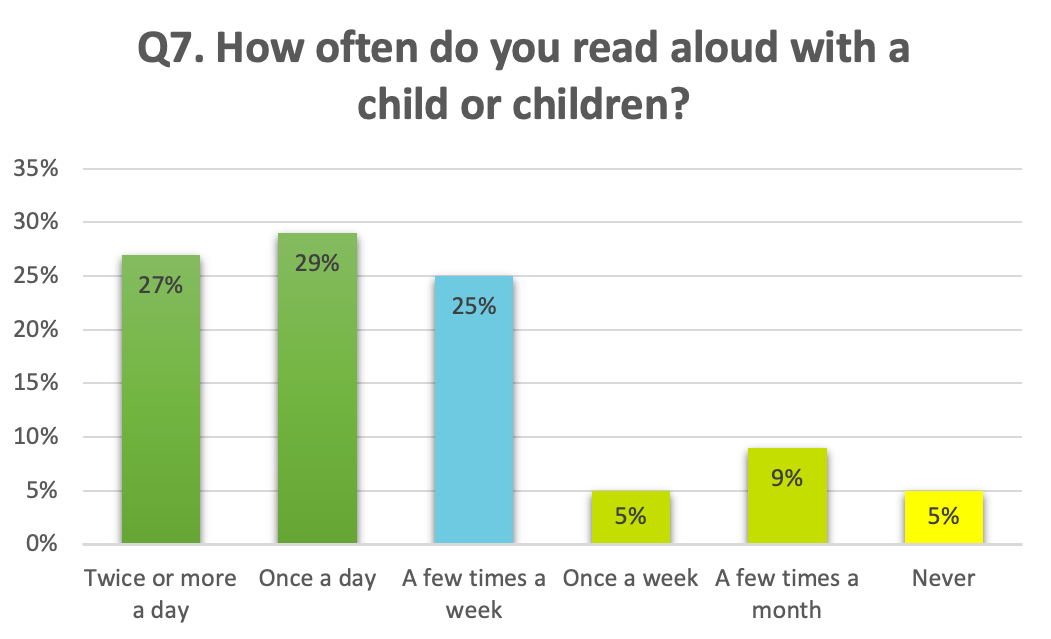 The BookSpring 2020 Central Texas Reading Survey provides valuable information about the reading habits of families in Central Texas. Conducted annually with consistent methods over the past three years, the effort provides a longitudinal snapshot of our regional progress in early literacy. As in previous years, it prompts interesting questions about the ongoing state of reading in the region. Results illuminate particularly digital reading habits and generational factors in reading at home.
The BookSpring 2020 Central Texas Reading Survey provides valuable information about the reading habits of families in Central Texas. Conducted annually with consistent methods over the past three years, the effort provides a longitudinal snapshot of our regional progress in early literacy. As in previous years, it prompts interesting questions about the ongoing state of reading in the region. Results illuminate particularly digital reading habits and generational factors in reading at home.
Falling Back on Books at Home
 The share of CTX households with children under the age of 12 having fewer than 20 children’s books grew to 52% in 2020, up from only 46% in 2019 and 58% in 2018. While there was a slide this year in the number of books reported in homes, the difference is within the +/- 4 point margin. Thus, the drop cannot be taken as a notable trend, particularly because of the unknown effects of the COVID-19 pandemic on children, families, and household status.
The share of CTX households with children under the age of 12 having fewer than 20 children’s books grew to 52% in 2020, up from only 46% in 2019 and 58% in 2018. While there was a slide this year in the number of books reported in homes, the difference is within the +/- 4 point margin. Thus, the drop cannot be taken as a notable trend, particularly because of the unknown effects of the COVID-19 pandemic on children, families, and household status.
Furthermore, while the number of families reporting 20 books or more at home decreased in 2020 to 48%, lack of access to books at home did not drop below 2018 levels. The homes reporting less than 20 books are most often low-income homes (65%), in Black/African American homes (65%), and those with younger caregivers (60%).
While education level of caregivers remains a factor, over 40% of respondents who did not complete college still reported having 20 or more children’s books at home. 44% of those who have completed college did not have 20 books at home.
Digital Devices for Reading is Up, Regardless of Race or Income
 When asked, “do any of the children whom you care for ever read on a digital device such as a smartphone or a tablet,” some unexpected results were revealed.
When asked, “do any of the children whom you care for ever read on a digital device such as a smartphone or a tablet,” some unexpected results were revealed.
The older the respondent, the more likely they were to report their child used a digital device for reading. Caregivers ages 18-29 were the least likely to answer “yes,” which is a counter-intuitive finding. This may indicate that younger caregivers have lower incomes and provide children with less access to devices. Perhaps that younger parents are more concerned about the effects of digital devices on their children than older ones. Follow up will confirm or dismiss that age of the caregiver was more significant that race or household income.
Race played less of a factor in this response, with 77% of all caregivers answering ”yes” and 23% “no.” The results held even across household income, with a bump in “no” for households from $40-$80K. A similar observation was seen previously in the research, indicating that middle wage earners may be stressed from lack of digital access as well as time with their children. This area suggests further research.
Reading Aloud at Least Once a Day is Up
 When compared with previous reports, we are seeing a slight positive trend in reported reading aloud, up 1% from 55% in 2019 and 49% in 2018. Overall, 56% of caregivers responded that they read aloud with a child once or more each day. 44% said it was less than that, with 5% answering ”never.”
When compared with previous reports, we are seeing a slight positive trend in reported reading aloud, up 1% from 55% in 2019 and 49% in 2018. Overall, 56% of caregivers responded that they read aloud with a child once or more each day. 44% said it was less than that, with 5% answering ”never.”
This 5% of caregivers never reading to their children has remained constant the past three years. This unfortunate persistence in families who never read together presents a challenge for program design.
Overall, reported differences in frequency of reading aloud by race and income were not significant. However, a high percentage of caregivers over 65 said that they read with a child less than once a day. Elderly caregivers often serve as temporary caregivers, a factor that was not addressed in this survey.
Final Thoughts on Early Literacy in Central Texas
Children and families use digital devices more frequently in their reading life, with over 77% reporting children reading on digital devices, up from 67% in 2018. Again, it’s unclear how COVID-19 is impacting this result. However, overall public awareness of BookSpring appears to be growing, from 15% in previous years, to 27% this year. BookSpring is proud to partner with United Way for Greater Austin Success by 6 Strategic Plan to work across our community raise the number of homes reporting at least 20 Books to 70% by the year 2023 (goal 2.6).
For additional information, please see the full presentation:
2020 BookSpring Survey Presentation (ppt)
BookSpring 2020 Central Texas Survey Toplines (pdf)
Methodology
Strategic Research Associates LLC are Jim Henson, PhD and Joshua Black, PhD. The survey included 600 residents living in Bastrop, Burnett, Caldwell, Hays, Travis, and Williamson Counties. Respondents indicated that they are the parent or frequent caregiver of a child currently under the age of 12 from September 9 through September 10, 2020. Results were presented with responses weighted by race to better match the target population according to U.S. Census Bureau, 2011-2015 American Community Survey 5-Year estimates of households with children under 18 years of age in the aforementioned counties. The margin of error for the full sample is +/- 4.00 percentage points.

